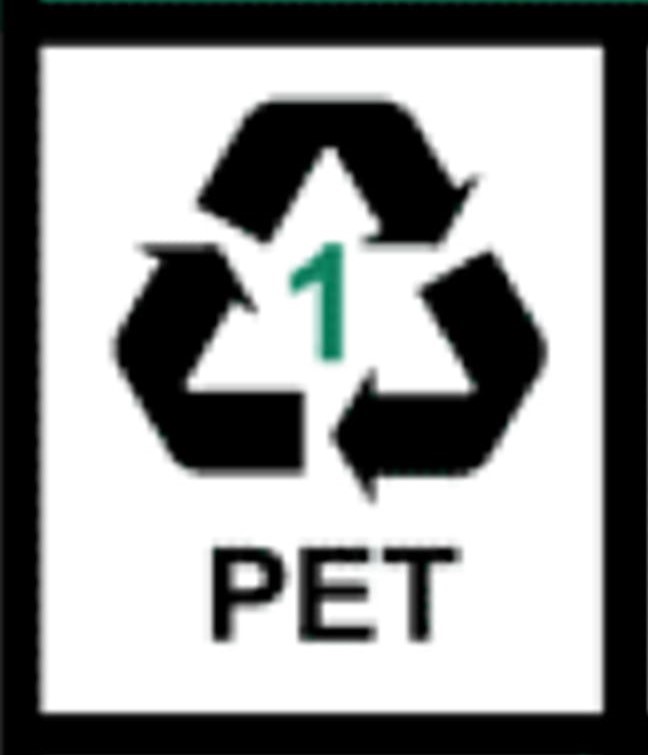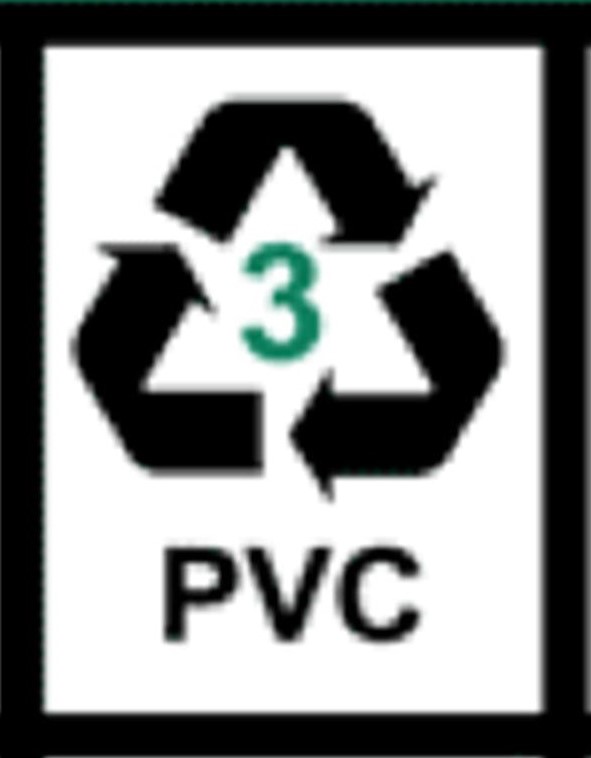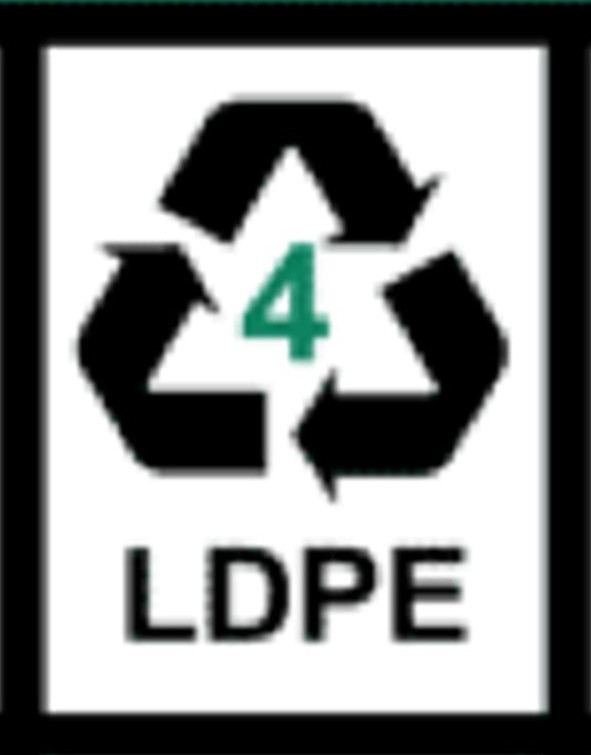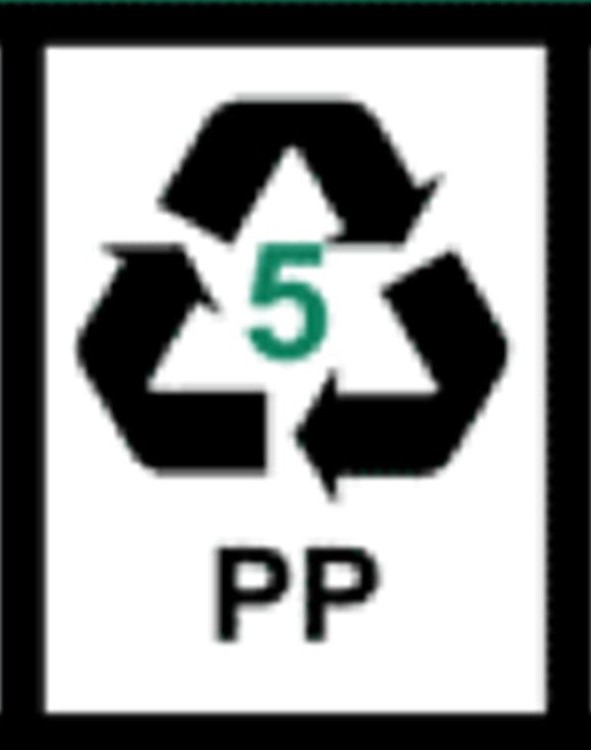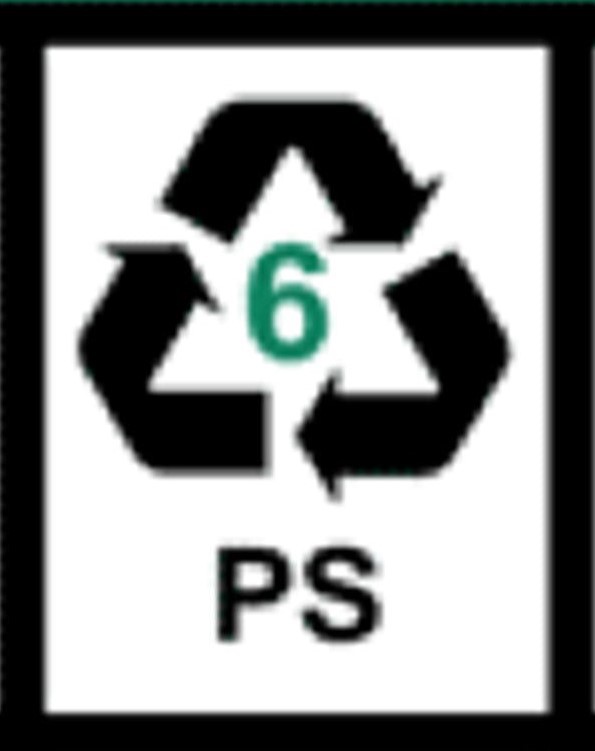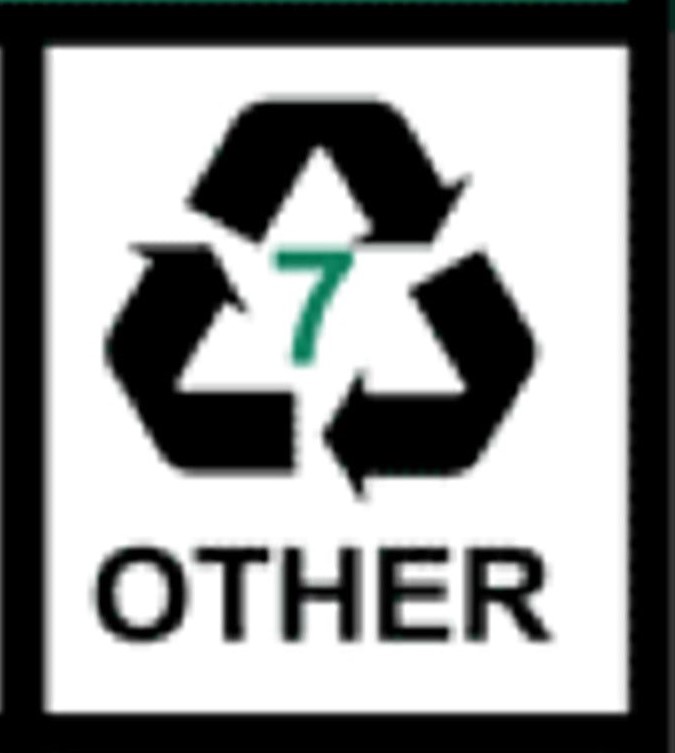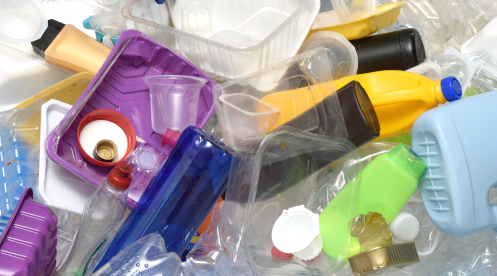Let’s Sort It Out
It can be confusing to know which items you can recycle. In this activity, you will investigate different types of plastic and some of their properties. Then you will design a new way to sort the plastics from waste so that more plastic gets recycled and can be used to make new products.
Teacher Tips!
Many activities have a teacher view and a student view, and teachers can switch between those views by clicking the blue button in the upper-right. Students will not see this option - only teacher accounts see both views. The teacher view will start with overview text, if available, to frame the activity and get you started. This view will also have teacher tips and suggested answers to student questions spread throughout the activity. The teacher text interleaved with student-facing text will be in italics and should appear as a different color on your screen. Teacher tips are designed to help you deliver a learning experience that is best suited for your classroom.
Printing Reminder
Whichever view you see on your screen is what will print. You can print this activity without teacher tips by selecting the student view, or print with teacher tips by switching to teacher view. Simply use the standard print function available for your web browser. No extra steps are required.
Activity Title:
Let’s Sort It Out
Description:
It can be confusing to know which items you can recycle. In this activity, students will investigate different types of plastic and some of their properties. Then they will design a new way to sort the plastics from waste so that more plastic gets recycled and can be used to make new products.
Target Grade Level:
Grades 5-8
Discipline or Course (Audience):
Chemistry
Time Frame:
Two to three 45-minute class periods (90-120 minutes)
Suggested Grouping:
Groups of 3-4 students
Key Vocabulary:
Physical properties, Chemical properties, Density
Educator Prep:
- Prior to the activity, collect samples of the seven different types of plastic.
- Educators should review resources prior to sharing with students.
Recommended Student Background Knowledge and Skills:
- Discuss physical properties and chemical properties.
- Discuss density and review what type of property it would be (physical property). Students should have some previous experience with density.
- Supporting Material - Densities and Types of Plastics
Using This Activity with Other Audiences:
- This activity can be adjusted for younger students by providing sentence stems, narrowing the focus to a specific material, grouping the students, and providing research materials that are age appropriate.
Remote Learning Adaptations:
This activity is appropriate for remote learning; no adaptations or modifications are necessary.
STUDENT CONTENT BELOW THIS LINE
Do you ever wonder where all the plastics you put in the recycling bin go? Thanks to new technology, the plastic you recycle today might become the running shoes on your feet tomorrow! Recycling technology has come a long way. In 2019, 460 million metric tons of plastic products produced and only 9% were recycled (41.4 million metric tons) and returned to the supply chain as an alternative resource, replacing natural resources. It is projected that by 2060, 1,231 million metric tons of plastic will be produced and 111 million metric tons of plastic will be recycled and returned to the supply chain. (sources: ISRI; Web Link - Plastic Waste Factsheet ). But making new products from plastics requires that they are properly sorted. Plastics are generally classified into one of seven categories by their physical properties and chemical properties. Each category is labeled with a number symbol in a triangle:
When plastics are collected for recycling, they are generally mixed and may also be collected with different densities, such as glass and metals. In this activity, you will investigate the properties of plastic and how those properties are safe to be recycled and upcycled into new products. Then you will be tasked to design a new way to sort the plastic from our waste so that it can become recycled and used as a new resource. In this activity, you will investigate the different types of plastic commodities that are used in the world. It is very confusing to most individuals on which of these commodities is safe to use and recycle and which are not. Students will be tasked to design a new way to sort the plastics from our waste so that less goes to landfills and can be used to make new products. Watch the video to learn more: Web Link - ISRI Recycled Materials Series: Plastics
Materials:
- Device with internet access
- Samples of 7 types of plastics (teacher collected and student collected)
- Web Link - How to read a Safety Data Sheet (SDS), for beginners
- Web Link - Safety Data Sheet Search
- Web Link - Types of Plastic - A Complete Plastic Numbers Guide
- Web Link - Omnexus - The material selection platform
- Supporting Material - Let’s Sort It Out - Student Activity Sheet
Safety Notes:
- When using technology, engage in safe, legal, and ethical behavior; this applies to devices (hardware), applications or programs (software), and interactions with others.
- Plastic samples must be clean. Make sure that samples do not have sharp edges or other potentially hazardous characteristics.
Instructions
The day before the lab activity, show students plastics you’ve collected and then challenge them to add to your collection, making sure you have examples of all seven categories of plastic (assign for homework and have students bring in items the following day).
Part 1: Identifying Properties and Function of Plastics
- Gather the plastic samples that have been collected and give each group of students at least one of each type of plastic listed in Table 1.
- Let's examine the samples. Can they bend, do they break, or do they crinkle? Think of other physical properties and record them on your Student Activity Sheet. color, density, melting point, boiling point, smell, malleability, etc.
- Separate your samples into seven groups by the physical properties you identified in step 2. Did your groupings match the types listed in Table 1?
- Based on your groupings and the plastics types in Table 1, record the physical properties you identified for each group and identify what your samples were used for.
- On your Student Activity Sheet, complete Table 1 using Web Link - Safety Data Sheet Search , Web Link - Types of Plastic - A Complete Plastic Numbers Guide , Web Link - Omnexus - The material selection platform to continue to identify additional physical properties, chemical properties, toxicity, uses, and how to recycle the seven types of plastics.
Table 1: Plastic Properties, Uses, and How To Recycle
Plastic Type |
Physical Properties |
Chemical Properties |
Toxicity Information |
Uses |
How To Recycle |
|
PETE (Polyethylene Terephthalate) |
clear plastic, porous structure, density - .0434 lb/in3 |
semi-crystalline |
Cause carcinogens leach when heated |
soda & water bottles, cups, jars, trays, clamshells |
Accepted at most recycling plants |
|
HDPE (High-density Polyethylene) |
high density - 0.0338 - 0.0383 lb/in3 |
prepared from ethylene via a catalytic process |
potentially more toxic than previously thought |
milk jugs, detergent & shampoo bottles, flower pots, grocery bags |
can be reused and can be recycled up to 10 times |
|
PVC / V (Polyvinyl Chloride) |
elastic |
phthalates |
highly toxic |
cleaning supply jugs, pool liners, twine, sheeting, automotive product bottles |
least recycled |
|
LDPE (Low-density Polyethylene) |
elastic, density 1.06 g/cm3 |
when exposed to sunlight produces methane and ethylene |
Not thought to be a hazardous substance |
bread bags, paper towels & tissue overwrap, squeeze bottles, trash bags, six-pack rings |
very little is recycled |
|
PP (Polypropylene) |
heat resistant, density 0.905 g/cm3 |
is isotactic |
May form combustible dust concentrations in air |
yogurt tubs, cups, juice bottles, straws, hangers, shipping bags |
very little is recycled |
|
PS (Polystyrene) |
density 1.18 g/cm3 |
produced by the polymerization of styrene |
can cause carcinogenic effects when heated |
To-go containers & flatware, hot cups, razors, CD cases, shipping cushion, cartons, trays |
hard to recycle |
|
Other (Polycarbonate/Lexan) |
will vary |
will vary |
will vary |
Polycarbonate, nylon, ABS, acrylic, bottles, safety glasses, CDs, headlight lenses |
hard to recycle |
- Which types of plastics can be reused? High-Density Polyethylene (#2), Low-Density Polyethylene (#4), limited reuse of Polystyrene (#6) and Other (#7)
- What types of plastics can be recycled? Answers may very, but many plastics can be recycled in some way depending on the waste management companies in your area
- Why would you choose the type of plastic to use for different objects? Answer will very, but should refer to the properties of the plastic
- When recycled, these plastics can become… Enter your answers in Table 2.
Table 2: New Products from Recycled Plastics (source: Web Link - Plastic Food Packaging Symbols and What They Mean )
Plastic Type |
This Recycled Commodity Can Become… |
|
PETE (Polyethylene Terephthalate) |
clothing, carpet, clamshells, soda & water bottles |
|
HDPE (High-density Polyethylene) |
Pipe, wall siding, binders, carpet backing, flooring |
|
PVC / V (Polyvinyl Chloride) |
electronic housings, auto parts |
|
LDPE (Low-density Polyethylene) |
detergent bottles, flower pots, crates, pipe, decking |
|
PP (Polypropylene) |
trash bags, plastic lumber, furniture, shipping envelopes, compost bins |
|
PS (Polystyrene) |
paint cans, speed bumps, auto parts, food containers, hangers, plant pots, razor handles |
|
Other (Polycarbonate/Lexan) |
picture frames, crown molding, rulers, flower pots, hangers, toys, tape dispensers |
Part 2: Design a Better Way to Identify and Separate Plastics
Now that you have some background knowledge of the plastic commodities industry, your task is to design an easier way to identify and separate the plastics that can be reused or repurposed into new products and not dumped into a landfill.
Things to consider in your design:
- Watch Web Link - ISRI Recycled Materials Series: Plastics .
- Discuss 5-7 different properties that might be used to identify the different types of plastics. (examples students may give might include: color, shape, texture, transparency, size, smell, melting point, boiling point, density)
- How could you leverage Industry 4.0 technologies (Robotics, Artificial Intelligence, Optical Scanning, Laser Technology, etc.)?
- Could you change something about the symbols used on the plastics? Use a different identification besides the number symbols.
- Be creative!
Reflect and Apply:
- Describe what you know about recycling. Can you identify products at school that are made from recycled plastics? The easiest examples might be fencing or landscape materials, but could include many other items
- If you had additional resources and time, what might your group want to explore for your design in Part 2? answers will vary depending on student ideas
- After learning about the different types of plastics, would you still purchase the ones that can not be reused or recycled? Is there another resource that you could have chosen instead? Answers will vary depending on students’ ideas
Extension:
- Construct an explanation of how a plastic bottle might become a shoe starting from curbside pick-up.
- Write a narrative from the perspective of a plastic bottle depicting its journey from new to used, to recycled, to new again.
- Make a list of other products made from recycled plastics by conducting research. Find some of these products at home, or at local businesses like a building supply store, and take some pictures. Prepare a communication for the community that shows the advantage of using products created with recycled plastic commodities, using the photos as illustrations.


